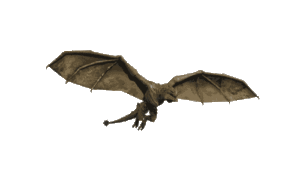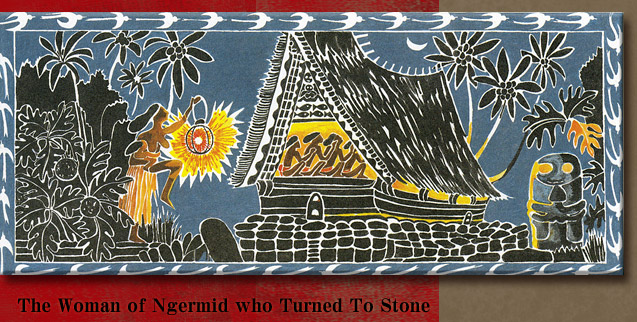


 |
|||||||||||||||||||||||||||||||||||||||||||||||||||||||||||||||||||||
|
Mengidabrutkoel, a spider in the form of a young man, came from Peleliu to Ngiwal, where he took a young woman named Turang as his bride. When the time came for the midwives of the village to slice open her stomach and deliver her baby, the husband refused to let the women near her. While they stormed outside of the house, the spider supervised the first natural delivery of a child.
|
||||||||||||||||||||||||||||||||||||||||||||||||||||||||||||||||||||
|
© 2010 BELAU NATIONAL MUSEUM. ALL RIGHTS RESERVED. |
|||||||||||||||||||||||||||||||||||||||||||||||||||||||||||||||||||||
 Long ago, the people of Palau did not know how to deliver a baby, except by slicing open the mother�s stomach with a bamboo knife. Unfortunately, the mother of the child would always perish.
Long ago, the people of Palau did not know how to deliver a baby, except by slicing open the mother�s stomach with a bamboo knife. Unfortunately, the mother of the child would always perish.